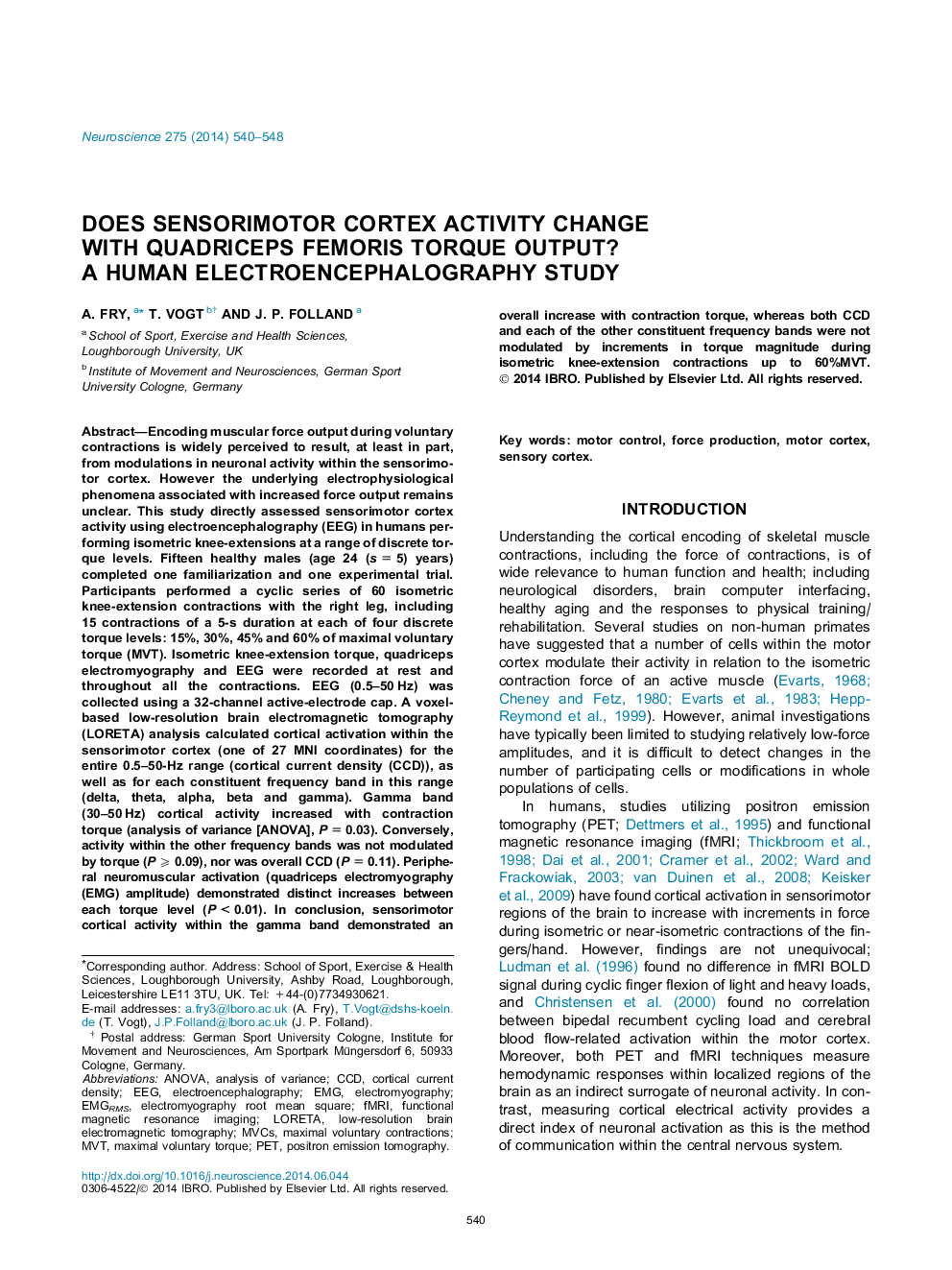| کد مقاله | کد نشریه | سال انتشار | مقاله انگلیسی | نسخه تمام متن |
|---|---|---|---|---|
| 6273489 | 1614801 | 2014 | 9 صفحه PDF | دانلود رایگان |
عنوان انگلیسی مقاله ISI
Does sensorimotor cortex activity change with quadriceps femoris torque output? A human electroencephalography study
دانلود مقاله + سفارش ترجمه
دانلود مقاله ISI انگلیسی
رایگان برای ایرانیان
کلمات کلیدی
CCDMVCsmvTcortical current densityElectroencephalography - الکتروانسافالوگرافیEMG - الکترومیوگرافیelectromyography - الکترومیوگرافیanalysis of variance - تحلیل واریانسANOVA - تحلیل واریانس Analysis of variancefMRI - تصویرسازی تشدید مغناطیسی کارکردیfunctional magnetic resonance imaging - تصویرسازی تشدید مغناطیسی کارکردیForce production - تولید نیرویlow-resolution brain electromagnetic tomography - توموگرافی الکترو مغناطیسی مغز با وضوح کمPositron emission tomography - توموگرافی گسیل پوزیترونMaximal voluntary contractions - حداکثر انقباض داوطلبانهMotor cortex - قشر حرکتیSensory cortex - قشر حسیLORETA - لورتاEEG - نوار مغزیPET - پتMotor control - کنترل حرکتی
موضوعات مرتبط
علوم زیستی و بیوفناوری
علم عصب شناسی
علوم اعصاب (عمومی)
پیش نمایش صفحه اول مقاله

چکیده انگلیسی
Encoding muscular force output during voluntary contractions is widely perceived to result, at least in part, from modulations in neuronal activity within the sensorimotor cortex. However the underlying electrophysiological phenomena associated with increased force output remains unclear. This study directly assessed sensorimotor cortex activity using electroencephalography (EEG) in humans performing isometric knee-extensions at a range of discrete torque levels. Fifteen healthy males (age 24 (s = 5) years) completed one familiarization and one experimental trial. Participants performed a cyclic series of 60 isometric knee-extension contractions with the right leg, including 15 contractions of a 5-s duration at each of four discrete torque levels: 15%, 30%, 45% and 60% of maximal voluntary torque (MVT). Isometric knee-extension torque, quadriceps electromyography and EEG were recorded at rest and throughout all the contractions. EEG (0.5-50 Hz) was collected using a 32-channel active-electrode cap. A voxel-based low-resolution brain electromagnetic tomography (LORETA) analysis calculated cortical activation within the sensorimotor cortex (one of 27 MNI coordinates) for the entire 0.5-50-Hz range (cortical current density (CCD)), as well as for each constituent frequency band in this range (delta, theta, alpha, beta and gamma). Gamma band (30-50 Hz) cortical activity increased with contraction torque (analysis of variance [ANOVA], P = 0.03). Conversely, activity within the other frequency bands was not modulated by torque (P ⩾ 0.09), nor was overall CCD (P = 0.11). Peripheral neuromuscular activation (quadriceps electromyography (EMG) amplitude) demonstrated distinct increases between each torque level (P < 0.01). In conclusion, sensorimotor cortical activity within the gamma band demonstrated an overall increase with contraction torque, whereas both CCD and each of the other constituent frequency bands were not modulated by increments in torque magnitude during isometric knee-extension contractions up to 60%MVT.
ناشر
Database: Elsevier - ScienceDirect (ساینس دایرکت)
Journal: Neuroscience - Volume 275, 5 September 2014, Pages 540-548
Journal: Neuroscience - Volume 275, 5 September 2014, Pages 540-548
نویسندگان
A. Fry, T. Vogt, J.P. Folland,